| Ariete
at Gazala
By Mike Bennighof, Ph.D.
October 2015
The uneven quality of Italian army units
in the Second World War sometimes obscures
the achievements of the better Italian formations.
The 132nd “Ariete” Armored Division
compiled an outstanding combat record in North
Africa, before its destruction attempting
to cover the German flight from El Alamein
in late 1942. It’s one of the most
important formations in our Gazala game.

The 132nd Armored Division was officially
formed in February 1939 from the 2nd Armored
Brigade and 8th Bersaglieri Regiment, but
experiments and manuevers had been under way
for almost two years by that point and granting
the “division” title was a formality.
Italian divisions had adopted the old Piedmontese
Armata Sarda’s tradition of naming brigades,
usually after a city or region (not necessarily
that where it was raised) when Mussolini declared
all the army’s brigades to be divisions.
The 132nd took the name “Ariete,”
or “Ram.” The 131st “Centauro”
armored division formed at the same time,
from the 1st Armored Brigade. When Centauro
deployed to Albania in April, the Littorio
legionary division (a formation made up of
army “volunteers” that had just
returned from the Spanish Civil War) converted
to an armored division and took its place
in the Armored Corps.
Officially the armored divisions took their
recruits from all over Italy, but in practice
most of Ariete’s men came from the big
cities of northern Italy, particularly Milano.

Italia avanti!
Ariete sent two tank battalions to the Italian
colony of Libya in late 1940 to face the British,
where both were destroyed at the Battle of
Beda Fomm. While they accomplished little,
they set a standard of near-suicidal bravery
that the division would carry for the remainder
of its existence. The remainder of the division
deployed to Libya in January 1941 and fought
continuously until December 1942. The division
built an outstanding combat record, but the
peak of its performance came at Gazala in
May 1942.
At the time, Ariete contained the crack
8th motorized Bersaglieri
Regiment of three battalions, the three
medium tank battalions of the 132nd Armored
Regiment (equipped with M13/40 tanks for the
most part), one light tank battalion (3rd
battalion of the Nizza Cavalleria, equipped
with L6 light tanks), two small assault gun
battalions with 75mm semovente self-propelled
howitzers, an armored car battalion, a motorized
engineer battalion and an artillery regiment
including a battalion of 90mm anti-aircraft
guns and another with German-made 88mm guns.
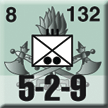 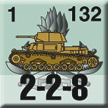 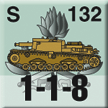
Ariete opened Operazione Venetia, later known
as the Battle of Gazala, by overrunning and
destroying the 3rd Indian Motor Brigade on
the morning of 27 May 1942, but soon suffered
heavy losses in an ill-considered attack on
the Free French brigade dug in at Bir Hacheim.
The division then moved to the rear of the
“Cauldron” position. Here the
German divisions of the Afrika Korps faced
westwards toward the trapped Commonwealth
army, while Ariete screened their rear from
Allied relief attempts.
Ariete repelled repeated British tank attacks
on the 29th, delivered with great bravery
but little coordination. Italian 88mm and
90mm anti-aircraft guns, used in an anti-tank
role, destroyed dozens of British tanks. Still
they kept coming. The British tried again
on 4-5 June with better organization but no
more success. On 11 June Ariete and the Germans
began an attack to the east that broke the
British tank brigades and led to a general
Allied withdrawal. Rommel had won his greatest
victory thanks to an Italian armored division.
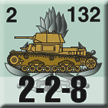 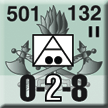 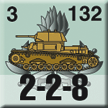
Ariete was successful at Gazala thanks to
an experienced organization with high morale
and good leadership, and despite the fact
that its tanks were badly outclassed by the
American-made machines of the British. In
an earlier installment we looked at Italian
failure to obtain a license
to build the Daimler-made PzKw IIIJ. This
vehicle could easily have been available to
Ariete in place of the outmoded M13/40. We have a small download of the 132nd Armored
Regiment as equipped with this more capable
vehicle. You can download the new pieces here.
Click here to order Gazala now!
Mike Bennighof is president of Avalanche Press and holds a doctorate in history from Emory University. A Fulbright Scholar and award-winning journalist, he has published over 100 books, games and articles on historical subjects.
He lives in Birmingham, Alabama with his wife, three children and his dog, Leopold.
|
